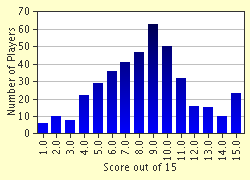Quiz Answer Key and Fun Facts
1. A butterfly rests with its wings _____, while a moth rests with its wings ______. Fill in the blanks?
2. The attraction to light that nocturnal insects (such as moths)experience is a response known as what?
3. A cricket's ears are located where on its body?
4. Which of the following is NOT true about cockroaches?
5. Which of the following factors does NOT contribute to a fly's ability to hang on a ceiling upside-down?
6. A female mosquito drinks about ______ times its weight in blood at one time. Fill in the blank?
7. Why do mole crickets have large legs?
8. After a mosquito bites you, you itch. What part of the mosquito makes you itch?
9. Do praying mantises eat dead insects?
10. Which of the following will a ladybug do to avoid being eaten by a predator?
11. The sounds made by crickets, grasshoppers, and locusts are only made by what sex?
12. Why do certain beetles make squeaking or crying sounds when caught?
13. Does a dragonfly have simple eyes or compound eyes?
14. A bee's stinger is most likely to be located in which part of its body?
15. Which of the following insects is a threat to a home?
Source: Author
GeniusBoy
This quiz was reviewed by FunTrivia editor
crisw before going online.
Any errors found in FunTrivia content are routinely corrected through our feedback system.


